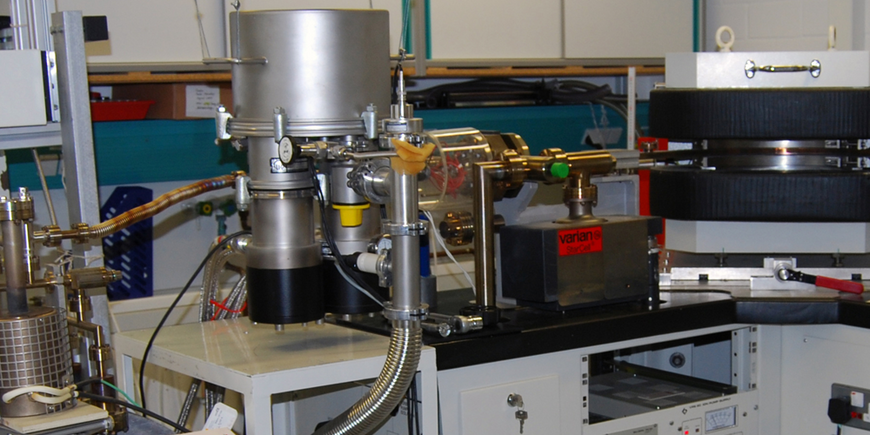11.02.2015: The impressive, 28 kilometers long and up to 100 meters deep Jökulsárgljúfur canyon in Iceland was created by just three single, catastrophic flood events during the last 10,000 years. In contrast, only a small amount of rock was eroded between the three events at 9000, 5000 and 2000 years ago. This has been revealed by scientists from the University of Edinburgh and from the GFZ based on a study of cosmogenic nuclides.
The geoscientists investigated basalt samples from three different strath terrace levels above the river Jökulsá á Fjöllum, which is incised into the canyon, for their concentration of the cosmogenic helium isotope 3He. The determination of the cosmogenic 3He concentration, which was used to date the flood events, was performed in the GFZ noble gas laboratory. „The noble gas isotope 3He is produced by the interaction of cosmic rays with rocks at the surface of the Earth“, GFZ geochemist Dr. Samuel Niedermann explains. „The 3He concentration in a piece of rock therefore indicates the duration of time this rock has spent at the very surface.“
All samples from Jökulsárgljúfur canyon fell into three age groups of ca. 9000, 5000, and 2000 years, respectively. Obviously, the sampled surfaces had thus been exposed during either of those three periods, each with very limited duration. In between, as well as during the last 2000 years, the canyon morphology did not change substantially. The removal of several meters up to a few tens of meters of basalt rock in a very short time span can only happen by catastrophic flood events. In this volcanically active area of Iceland, they were probably caused by volcanic eruptions and the sudden release of large amounts of meltwater from glaciers.
Paper: Edwin R. C. Baynes, Mikaël Attal, Samuel Niedermann, Linda A. Kirstein, Andrew J. Dugmore, and Mark Naylor, 2015: “Erosion during extreme flood events dominates Holocene canyon evolution in northeast Iceland”, PNAS Early Online Edition, 09.02.2015, doi: 10.1073/pnas.1415443112, Proceedings of the National Academy of Science PNAS








![[Translate to English:] Torsten Sachs in front of a climate station on a field](/fileadmin/_processed_/3/9/csm__TorstenSachs_bearbeitet_GS_4a1365ef84.jpeg)

![[Translate to English:] left image flood at the Ahrtal: image from above, several houses are flooded; left image:: Heidi Kreibich;](/fileadmin/_processed_/4/4/csm_Bild2_9af0130e9f.png)



![[Translate to English:] Start der Vega Rakete](/fileadmin/_processed_/6/4/csm_20231201-kachel_Vega-VV23-launch_ESA-CNES-Arianespace_706716b68c.jpeg)









![[Translate to English:] Poster exhibition at the Brandenburg Hydrogen Day at the GFZ, some participants in the foreground](/fileadmin/_processed_/6/5/csm_Erster_Brandenburgischer_Wasserstofftag_GFZ_402fcec95e.jpeg)
![[Translate to English:] Group picture of the participants](/fileadmin/_processed_/9/4/csm_20231108_CAWa-Workshop-Tashkent_Gruppenbild_99ea779d8a.jpeg)

![[Translate to English:] [Translate to English:] Hörsaal](/fileadmin/_processed_/e/6/csm_H%C3%B6rsal_e21ac645fb.jpeg)


![[Translate to English:] The Delegations in the Historic Library on the Telegrafenberg. In the back there are from left to right, the Dutch Ambassador for Germany, Ronald van Roeden, the Dutch Minister for Education, Culture and Science, Robbert Dijkgraaf and the scientific director of the GFZ, Susanne Buiter.](/fileadmin/_processed_/d/b/csm_Kachel-2_9eba4b4212.jpeg)

